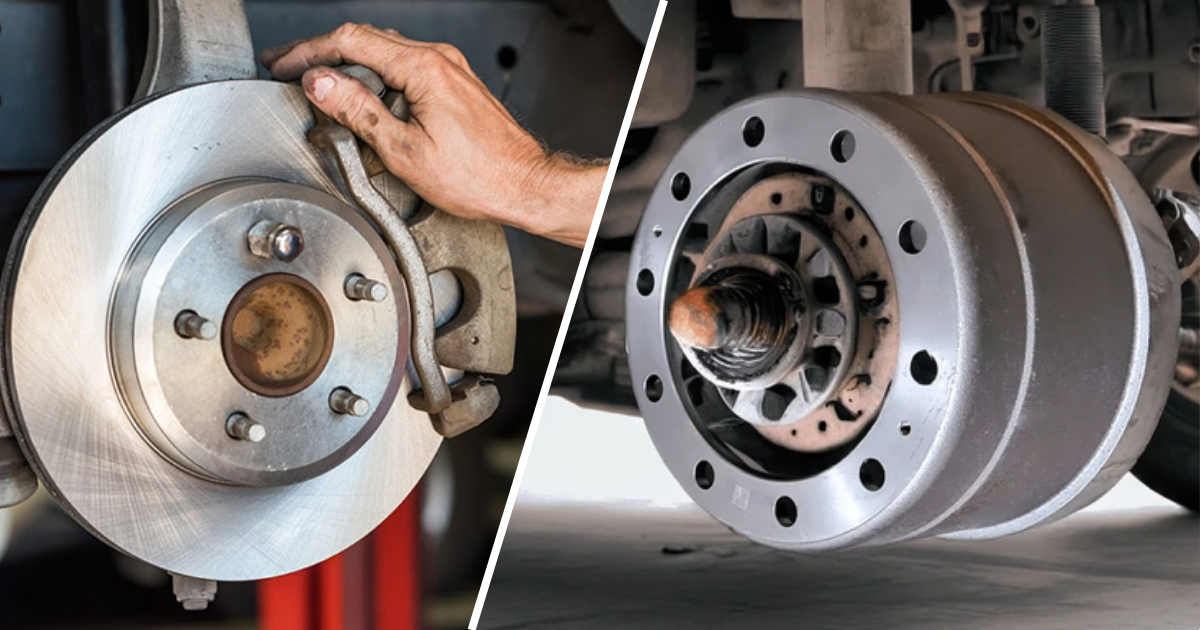The ongoing debate of drum brakes vs disc brakes centers on which technology best fits the needs of commercial vehicles.
Introduction
For fleet operators managing heavy trucks and trailers, the debate between drum brakes vs disc brakes is about more than technology – it’s about safety, maintenance, and cost. Understanding the differences between these types of brakes is key to making an informed choice. In this article, we’ll break down drum vs disc brakes in terms of how they work, use cases, stopping power, durability, maintenance needs, and suitability for different operations to showcase why brake drums remain the top choice for commercial vehicles.
How Drum Brakes vs Disc Brakes Work
Before diving into performance and cost, it’s essential to understand the basics of drum brake vs disc brake systems. Although disc and drum brakes both serve the same purpose, their mechanisms have certain characteristics.
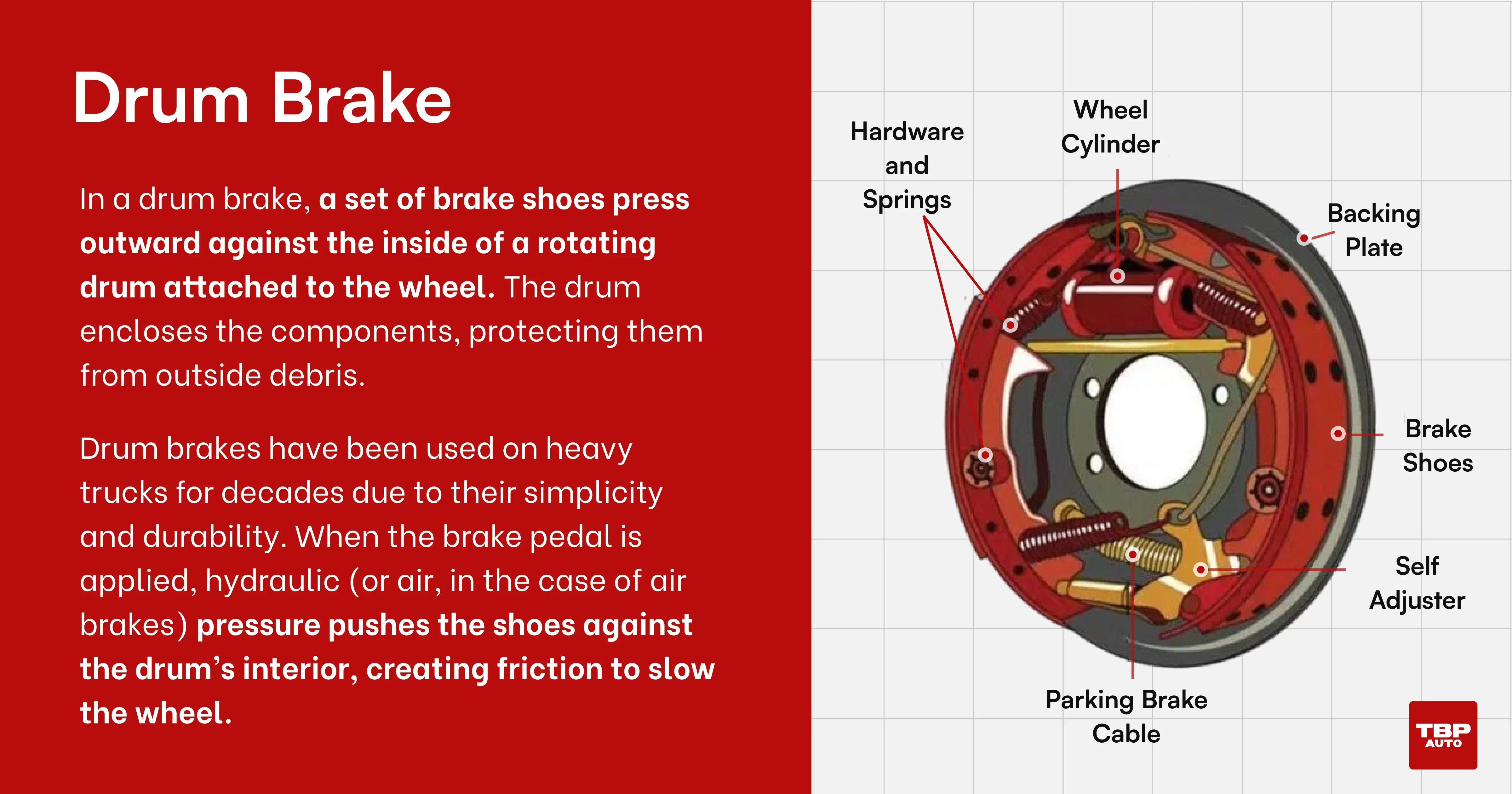
The fundamental difference between drum and disc brakes lies in how they manage the heat and force. In practice, modern disc vs drum brakes have both been engineered to meet stringent safety standards. The choice often comes down to balancing the difference between disc and drum brakes in raw performance with other factors like durability, maintenance, and costs.
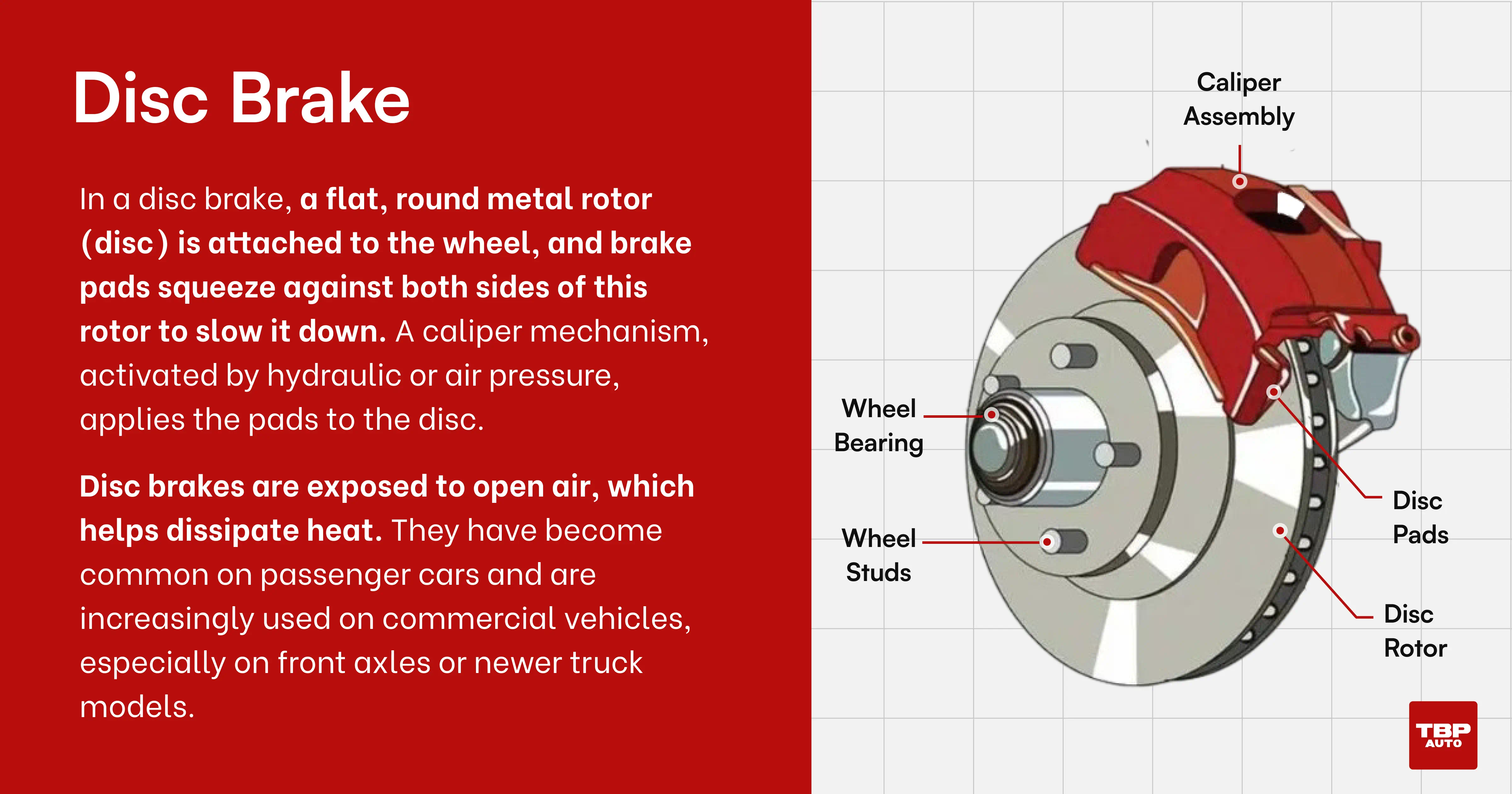
Disc vs Drum Brakes Use Cases and Applications
Different vehicle types and applications tend to favor either drum or disc brake systems (and sometimes a combination of both). The table below highlights common uses of disc and drum brakes across various vehicles:
As shown above, the brake drum vs brake disc choice often depends on the vehicle’s role. Most passenger cars have moved to discs for better performance and heat dissipation. In contrast, drum brakes vs disc brakes on semi-truck fleets is still an open discussion, but the majority of North American heavy trucks and trailers continue to rely on drum brakes by default. Standard drum brakes provide a perfectly adequate job for stopping loaded rigs in most situations, which is a big reason they remain widespread.
In practice, many fleets don’t go all-in on one brake type. Instead, they make strategic decisions based on where the vehicle operates and what kind of loads it hauls. Here's how disc and drum brakes are typically used on today’s trucks and trailers.
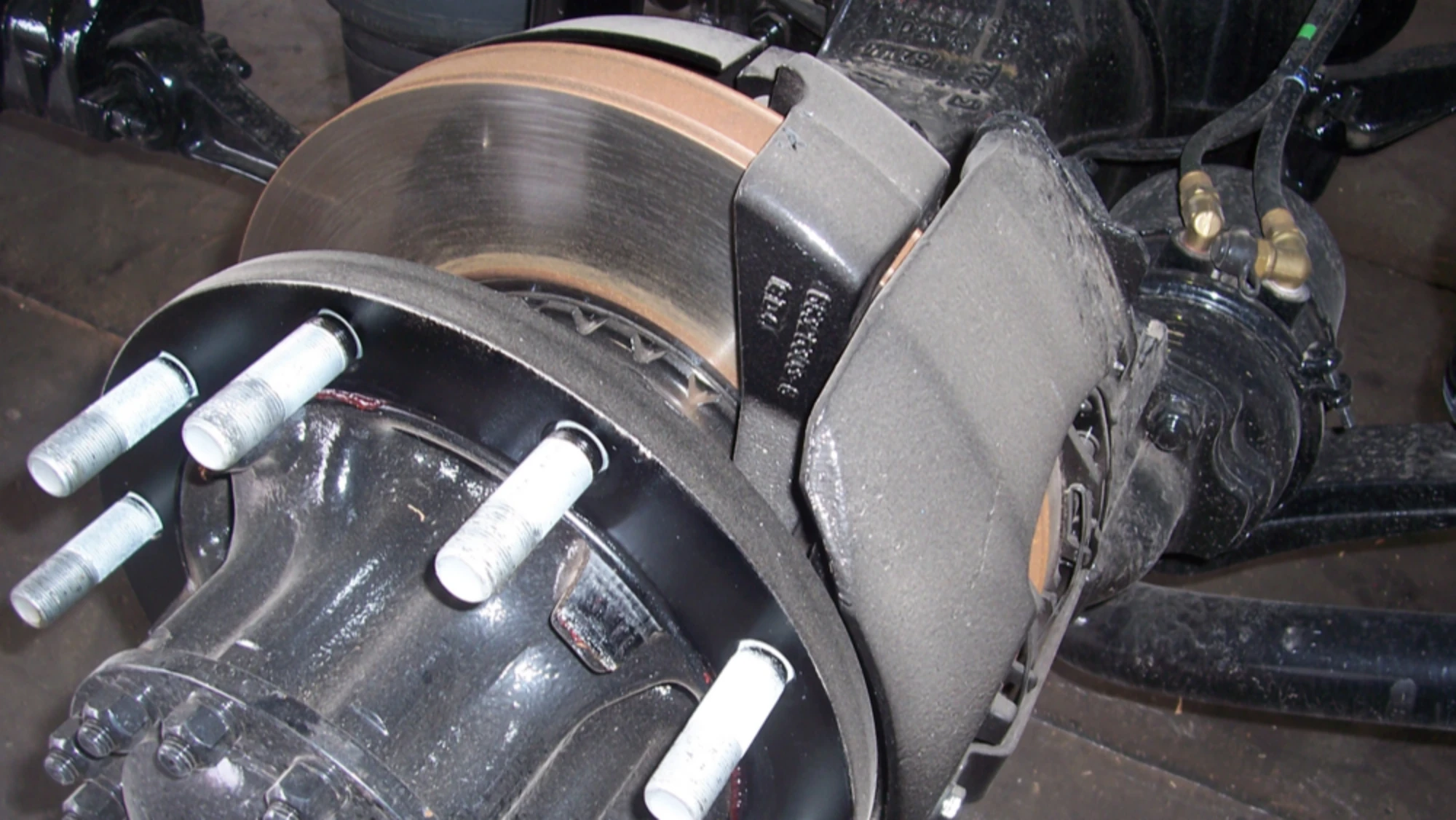
Disc Brakes vs Drum Brakes on Semi-Trucks
In modern semi-truck tractors, we often see either a full brake drum system or a mix of both drum brake and disc brake. Many new trucks now come with disc brakes on the front (steer) axles for improved stopping power and stability, while keeping semi brake drums on the rear drive axles to save cost.
This combination gives the shorter stopping distance benefits of discs where they matter most, without the expense of converting every wheel to disc. Some fleets spec disc brakes vs drum brakes on semi-trucks across all axles for maximum performance, particularly for trucks in severe service.
Disc Brakes vs Drum Brakes on Trailers
Trailers have traditionally used drum brakes. While air disc brakes are gradually making their way into trailer fleets, the cost to convert drum to disc brakes is significant, and many trailer operators stick with drums for now to keep costs down.
In mixed setups (for example, a tractor with discs pulling a trailer with drums), there is generally no issue – modern braking systems balance the differences effectively. Still, most fleets standardize brake drums across trucks and trailers for consistency in maintenance.
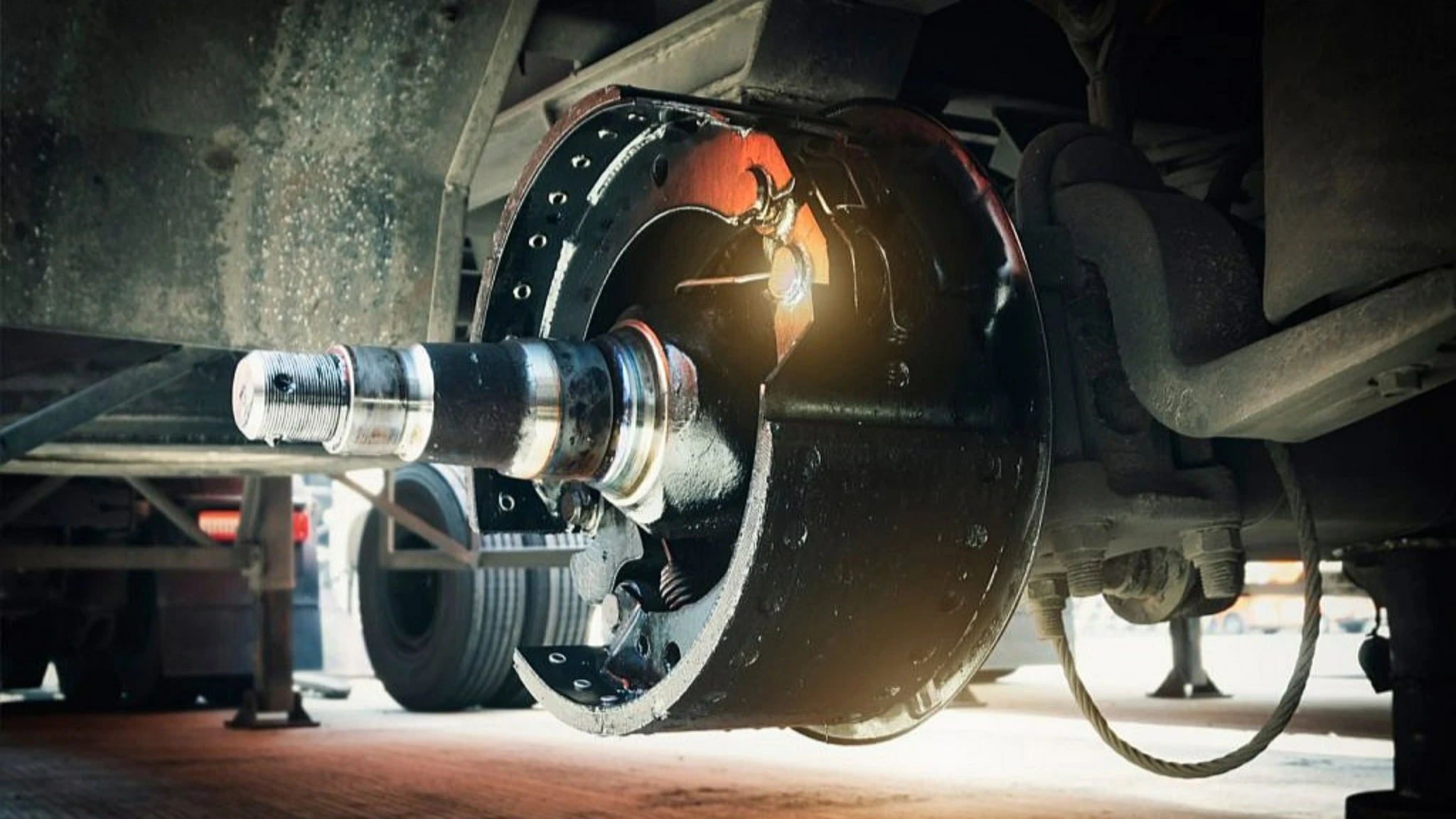
Why Drum Brakes Remain the Go-To Choice for Commercial Fleets
Even with the availability of advanced disc brakes, there are solid reasons why drum brakes remain the standard choice for many fleet operators. Below are the key benefits of drum brakes in heavy-duty service, highlighting the difference between drum brakes vs disc brakes from a fleet management perspective:
Durability and Long Service Life
Drum brakes are known for their rugged durability. The brake shoes have a large friction surface area and can hold more friction material than disc pads, which helps drum brakes last longer between replacements.
In the demanding context of freight trucks, this long service life means less frequent brake overhauls. Drums can endure heavy loads and high mileage while maintaining performance, making drum vs disc brake longevity a big plus for fleets.
Lower Maintenance Costs
Because of their durable design and enclosed components, drum brakes often lead to lower maintenance expenses over time. The larger wear surface means fewer lining replacements are needed. Enclosed drums also protect internal parts from rust and grime, reducing cleaning and service needs.
Additionally, replacement parts for drum brakes tend to be cheaper, thanks to the long history and economies of scale in drum brake manufacturing. Overall, when comparing disc vs drum brake upkeep in a fleet, drum brakes typically cost less to maintain in the long run.
From a parts perspective, drum brake shoes and drums are cheaper than disc pads and rotors. However, you’ll be buying drum parts more often. Some fleets do a total cost of ownership analysis: if the maintenance and safety benefits of discs outweigh the upfront cost over the truck’s life, they make the switch; if not, drum brakes remain a cost-effective choice.
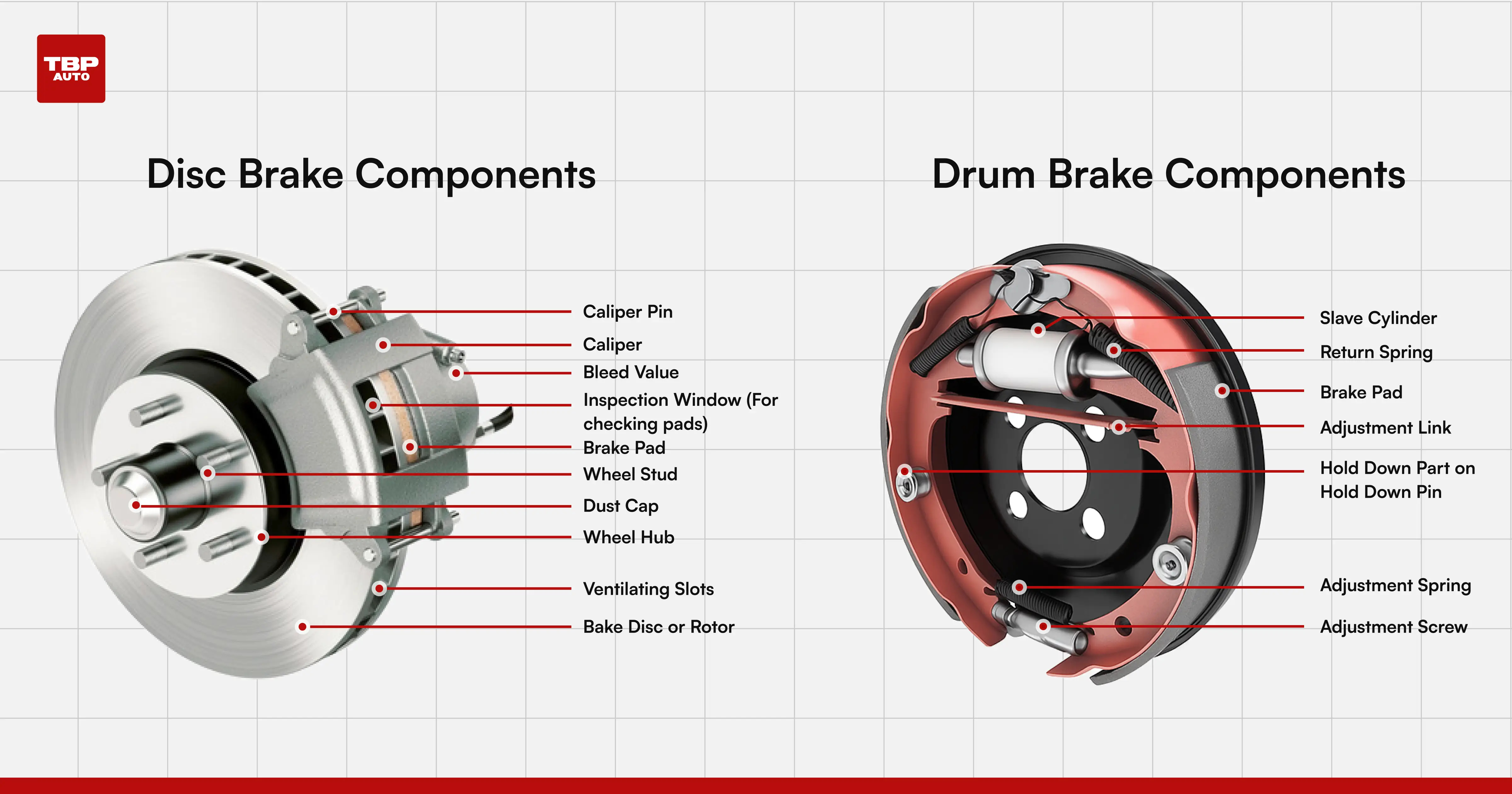
Better Protection in Harsh Environments
The enclosed drum brake design shields the brake components from external elements. This is an advantage for vehicles operating in dirt, mud, snow, or corrosive conditions. Gravel roads, construction sites, and harsh winter weather can all introduce debris and moisture to the braking system.
Drum brakes, being sealed, are better protected against these contaminants than exposed disc brakes. This reduces the risk of damage or performance issues when trucks slog through rain, mud, or dust. While drums may stay wet longer in a downpour, their overall protection from splashes and debris benefits longevity.
Technician Familiarity and Part Availability
Fleet maintenance crews have decades of collective experience with drum brake systems. Almost every diesel mechanic is trained to service and adjust drum brakes, and replacement parts (brake drums, shoes, springs, cams, etc.) are readily available at repair shops and parts dealers. This widespread “tribal knowledge” and parts availability means quicker turnaround for brake repairs and overhauls.
In contrast, technicians may require additional training to service newer air disc brakes, and certain disc brake parts might not be in stock in remote areas or smaller shops. The familiarity of drum brakes gives fleet operators confidence that any brake issue on the road can be swiftly addressed almost anywhere.
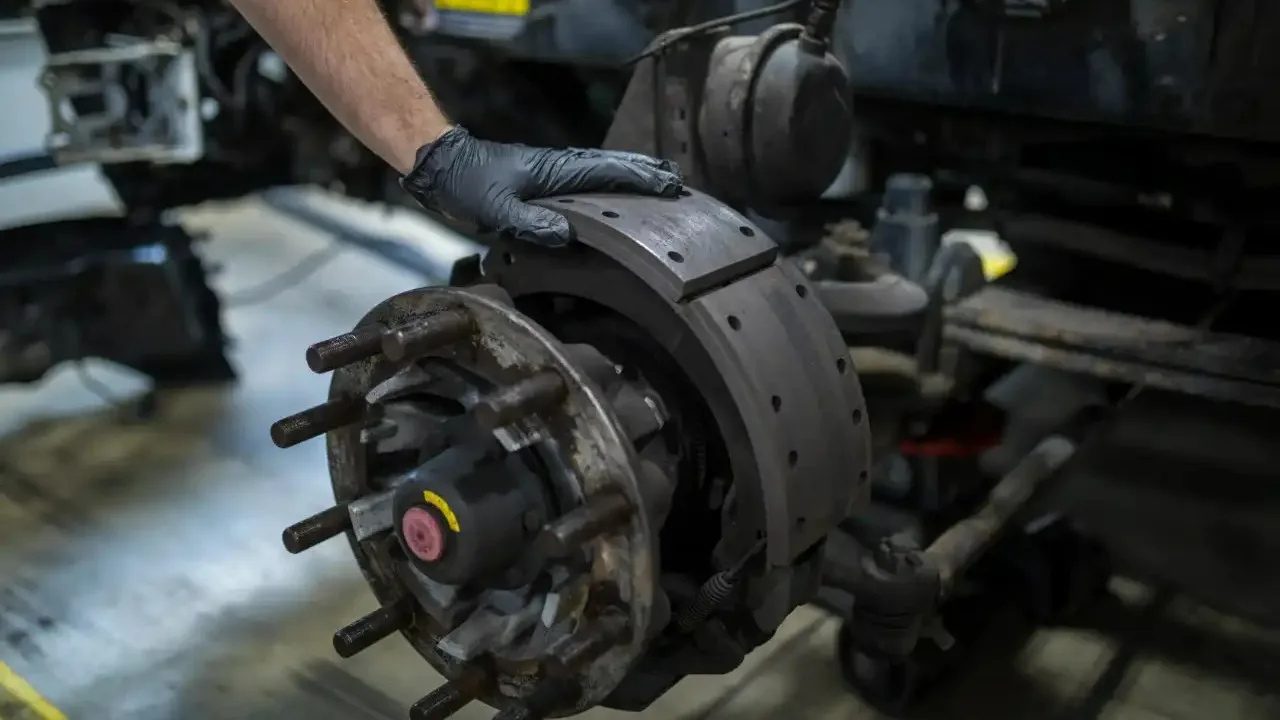
Integrated Parking Brake Advantage
In commercial trucks, drum brakes double as a reliable parking brake. When a truck is parked, spring brake chambers mechanically force the drum brake shoes against the drum to lock the wheel. Drum brakes hold fast without worry of contracting as they cool, so there’s little risk of the vehicle rolling. This built-in parking brake function is an inherent benefit of drum designs.
Many disc brake setups require additional components (such as a separate drum or special caliper mechanism) to provide the same holding capability. The simplicity of using the service drum brake as a parking brake is a practical advantage for drum systems in trucks and trailers.
Cost-Efficiency for Fleet Operators
For large fleets watching the bottom line, drum brakes vs disc brakes often win on cost-effectiveness. Drums generally have a lower upfront cost than discs when spec’ing a new truck, since drum assemblies are cheaper to produce and purchaser. The combination of lower initial price, longer component life, and affordable replacement parts makes drum brakes a budget-friendly choice.
While disc brakes can offer lifecycle benefits in some scenarios, many fleet managers find that the tried-and-true drum brake provides the best value over the vehicle’s life under typical operating conditions.
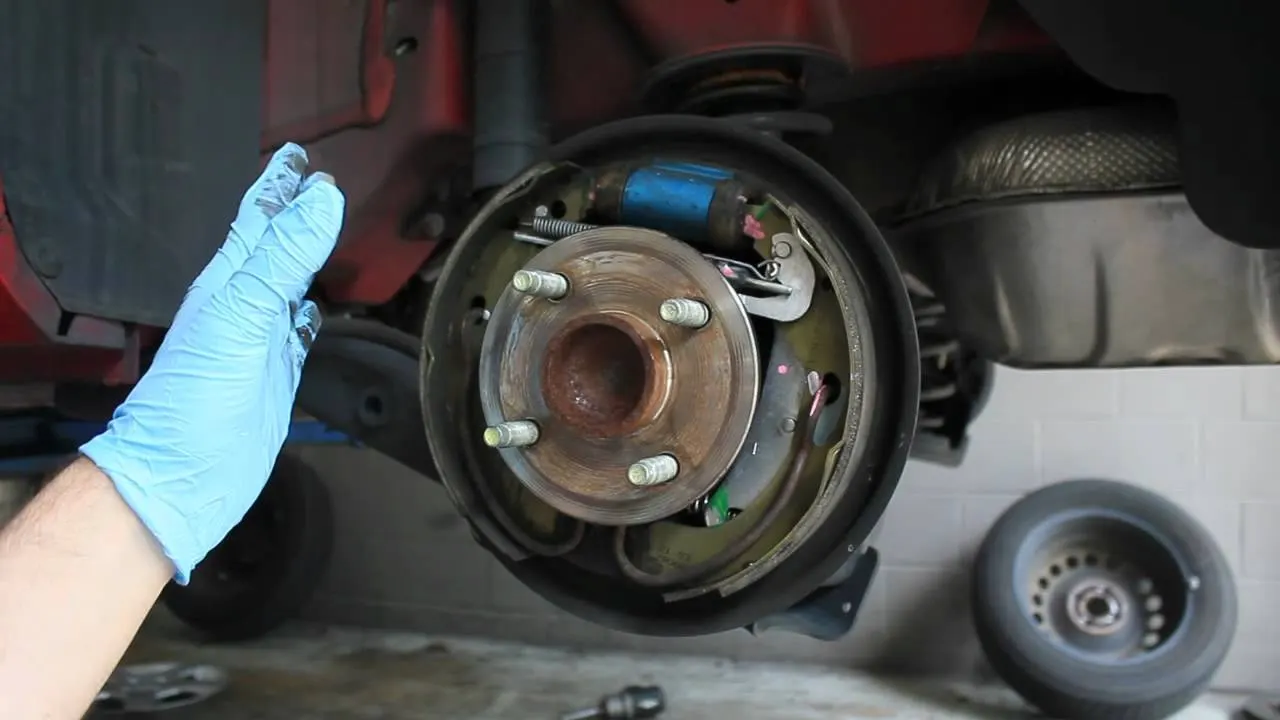
TBP Auto – A Trusted Brake Drum Supplier
TBP Auto has established itself as a trusted brake drum supplier for heavy-duty and commercial vehicles. Each TBP Auto drum is manufactured with premium materials and subjected to rigorous testing to meet stringent global performance and safety standards. This specialization and commitment to quality ensure that fleet operators have a reliable source for brake components engineered for durability and peace of mind on the road.
>>> Read more: SAE J431 G3000 and G3500 Gray Cast Iron Grades: Why They Excel in Braking
Aftermarket distributors, fleet operators, and even OEMs can benefit from TBP Auto’s focused expertise. We offer a broad range of brake drums compatible with American, Asian, and other commercial truck models, allowing mixed fleets to source diverse brake drums from one dependable supplier.
We adhere to strict international quality standards, such as the SAE J431 and FMVSS 121, ensuring our brake drums meet or exceed OEM specifications. With TBP Auto’s reliable products and support, fleet operators can continue to count on drum brake technology as a safe, proven choice for their commercial vehicles.
Conclusion
When comparing vs disc vs drum brakes in real-world heavy-duty fleet operations, drum brakes continue to offer practical advantages that are hard to ignore. Their long service life, resilience in tough environments, and cost-effectiveness make them a dependable choice for the workhorse trucks that keep our economy moving. For many fleet managers, the difference between drum brakes vs disc brakes comes down to reliability and total cost of ownership – categories where drum brakes excel.
As a leading supplier of brake drums designed for commercial fleets, TBP Auto offers the products and expertise to keep your rigs braking safely and efficiently. Contact us today to learn more about our premium brake drums for commercial vehicles and how we can support your fleet’s needs.


